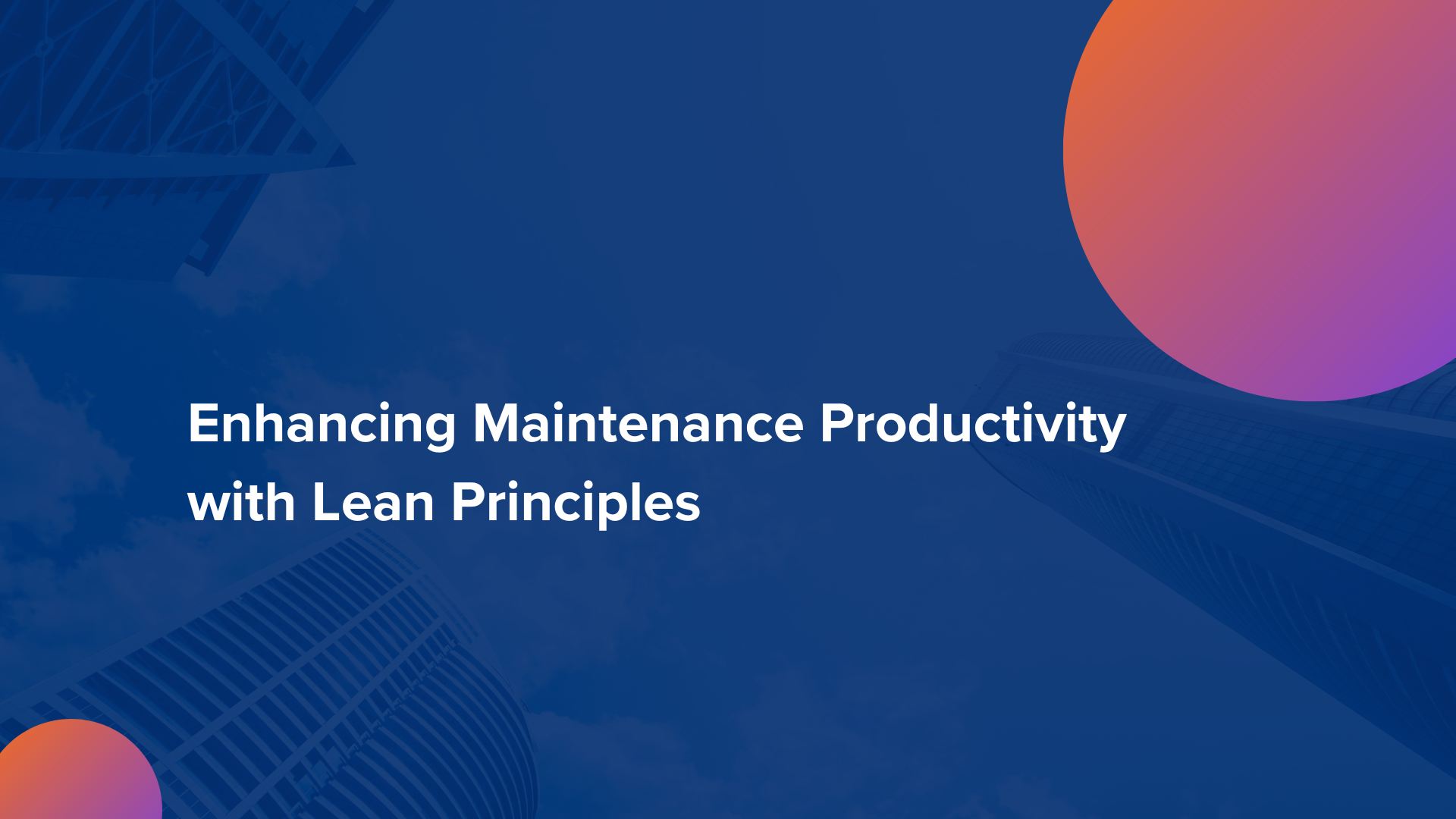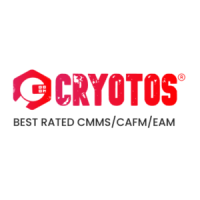Enhancing Maintenance Productivity with Lean Principles

I. Introduction
A. Concept of lean principles and their application in maintenance
The concept of Lean principles finds its roots in the Japanese manufacturing industry, particularly Toyota, with its central focus on reducing wasteful activities while amplifying value-adding processes. Lean principles strive to improve operational efficiency, drive productivity, enhance customer value, and ultimately achieve business excellence. These principles rest on five core ideas: identifying value from the customer’s perspective, mapping the value stream, creating flow by smoothing the work process, establishing a pull system based on customer demand, and pursuing perfection through continuous improvement.
When these Lean principles are applied to maintenance, the goal remains the same: eliminating waste and adding value. In maintenance terms, waste could refer to unnecessary downtime, excess spare parts inventory, redundant processes, or overexertion of labor. Meanwhile, value-adding processes might encompass Preventative Maintenance tasks, regular equipment inspections, or efficient resource allocation.
Organizations can streamline maintenance operations by applying Lean principles to maintenance, enhance productivity, reduce costs, and elevate equipment reliability and lifespan; This leads to increased operational efficiency and, ultimately, higher profitability.
B. Exploring how lean principles can enhance maintenance productivity.
In this blog post, we will delve into how Lean principles can be effectively applied to enhance Maintenance Productivity, reduce maintenance costs, and ensure optimal use of resources.
II. Understanding Lean Principles
A. Defining lean principles with a focus on eliminating waste and maximizing value
Lean principles revolve around optimizing processes by eliminating waste and inefficiencies while focusing on activities that add value. In maintenance, this translates to minimizing downtime, optimizing the use of resources, and ensuring high-quality maintenance work.
B. Key Principles
The key principles of Lean are fundamental concepts that guide the application of Lean methodology in various domains, including manufacturing, maintenance, and services. These principles aim to eliminate waste and create more value with fewer resources. The five key principles of Lean are:
- Identify Value: The first principle focuses on understanding what customers value in the product or service. It is imperative to recognize what the customer is willing to pay for and to align the production or service process accordingly.
- Map the Value Stream: After identifying the value, it is crucial to map the value stream, which involves all the activities and processes required to bring a product or service from concept to the customer. This mapping helps identify which steps add value and which do not so that the non-value-adding steps (considered as waste) can be eliminated or reduced.
- Create Flow: Once the waste has been identified and eliminated from the value stream, the next principle is to ensure that the value-adding activities flow smoothly without interruptions or delays; This means breaking down silos, making the system more flexible, and ensuring that the process steps are in a tight sequence.
- Establish Pull: Traditional production systems are based on forecasts and often produce more than what is required. In contrast, the Lean Pull principle dictates that nothing is produced without a demand. Products are ‘pulled’ through the value stream as customer demand arises, which helps reduce inventory and improve responsiveness to market changes.
- Pursue Perfection: The final Lean principle is pursuing perfection through continuous improvement; This is achieved by consistently applying the above principles, creating a culture where everyone is involved in systematically identifying and implementing improvements.
These Lean principles are the foundation upon which various Lean tools and techniques are built, such as Kaizen, Just-in-Time, Kanban, 5S, Total Productive Maintenance (TPM), and many others, to reduce waste, improve efficiency, and deliver value to the customer.
C. Benefits of lean principles
Lean principles can significantly improve efficiency, reduce costs, and optimize productivity in various organizational settings. Here is how they can contribute to these aspects:
Improving Efficiency:
- Streamlining Processes: Lean principles focus on streamlining workflow by eliminating non-value-adding steps, which results in a smoother and more efficient process.
- Standardizing Work: Establishing standardized procedures ensures that best practices are consistently applied, leading to fewer errors and more efficient work processes.
- Reducing Downtime: Lean minimizes equipment downtime by implementing preventive maintenance and optimizing resource allocation, directly increasing efficiency.
- Improving Flow: Lean principles such as continuous flow and pull systems ensure that products or services flow through the process without delays or bottlenecks.
Reducing Costs:
- Waste Reduction: By identifying and eliminating waste (such as defects, overproduction, and excess inventory), Lean principles lead to a reduction in associated costs.
- Optimized Inventory: Through Just-in-Time Inventory Management, Lean reduces the costs of holding and managing inventory.
- Increased Asset Utilization: Lean encourages the optimal utilization of assets, ensuring that resources are not being wasted and, as a result, reducing costs.
Optimizing Productivity:
- Employee Empowerment: Lean empowers employees to take ownership and actively participate in continuous improvement initiatives, which can enhance their productivity.
- Focus on Value-Adding Activities: Employees can produce more in less time by focusing on value-adding activities and reducing the time spent on non-value-adding tasks.
- Continuous Improvement (Kaizen): Lean encourages a culture of continuous improvement, where small incremental changes lead to sustained productivity gains over time.
- Visual Management: Visual cues and information sharing improve communication among team members, enabling faster decision-making and response times, which contributes to increased productivity.
III. Applying Lean Principles to Maintenance
A. Value Stream Mapping
Value stream mapping is a Lean tool that visually represents all steps involved in the maintenance process. Mapping the maintenance process can help to identify bottlenecks, inefficiencies, and areas for improvement. Maintenance technicians’ involvement in the mapping process is crucial for harnessing their practical insights and experience.
B. Standardized Work and Visual Management
Standardized work procedures ensure consistency and efficiency in maintenance tasks. Visual management, encompassing visual cues, signage, and color coding, enhances the clarity of maintenance processes. Visual management fosters improved communication, reduces errors, and enhances productivity by making information easily accessible.
C. Continuous Improvement and Kaizen
Maintenance operations must embrace a culture of continuous improvement. Kaizen involves identifying and implementing small, incremental improvements that add significant benefits. Regular feedback, suggestion systems, and cross-functional collaboration are critical in nurturing continuous improvement.
D. Total Productive Maintenance (TPM)
TPM is a maintenance philosophy that focuses on optimizing the effectiveness of equipment.It includes pillars such as autonomous maintenance, planned maintenance, and focused improvement. TPM aligns with Lean principles by reducing downtime, improving equipment reliability, and streamlining maintenance processes.
IV. Implementing Lean Principles in Maintenance
A. Leadership and Employee Engagement
Leadership plays a pivotal role in driving Lean initiatives. Maintenance technicians and staff must be involved and engaged in the process. Training and empowering employees to identify and implement Lean improvements is essential.
B. Continuous Data Collection and Analysis
Collecting and analyzing maintenance data is integral to identifying areas for improvement. Maintenance Software can be used to track key performance indicators (KPIs) to measure maintenance productivity. Data-driven decision-making is central to Lean maintenance management.
C. Lean Tools and Techniques
Lean tools such as 5S, SMED, and Kanban can be employed in maintenance.
These tools can streamline workflows, reduce waste, and optimize resource allocation in maintenance operations.
V. Benefits of Lean Maintenance
A. Improved Efficiency and Productivity
Lean principles target the elimination of waste and streamlining maintenance processes. Increased efficiency translates to improved productivity and reduced downtime.
B. Cost Reduction and Resource Optimization
Lean principles are instrumental in identifying and eliminating unnecessary costs. Resource optimization is achieved through the judicious utilization of labor, spare parts, and equipment.
C. Enhanced Equipment Reliability and Maintenance Quality
Lean maintenance practices contribute to the improved reliability and performance of equipment. Standardized procedures and Productive Maintenance practices enhance maintenance quality.
VI. Conclusion
In conclusion, Lean principles offer a robust framework for enhancing maintenance productivity. Organizations can achieve reduced maintenance costs, improved efficiency, and optimal resource utilization through value stream mapping, standardized work, visual management, continuous improvement, and Total Productive Maintenance (TPM). Engaging leadership and employees in the process, along with the continuous data collection and analysis, further ensures the successful implementation of Lean principles in Maintenance Management. Lean maintenance is not just a set of tools but a philosophy that, when embedded in an organization’s culture, can yield transformative results.

